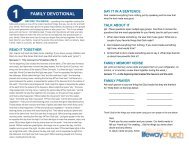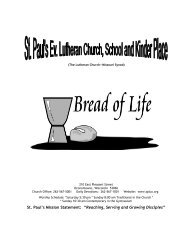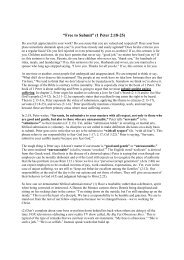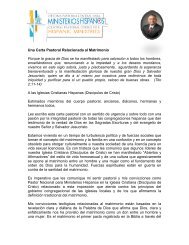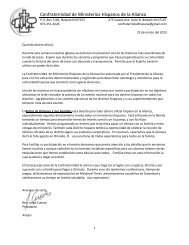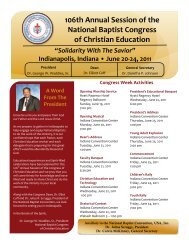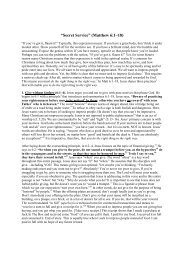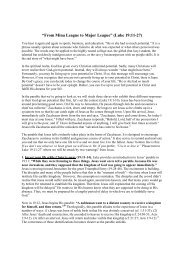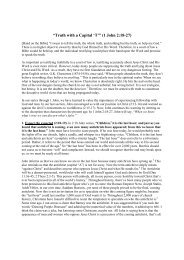A Proposal to Reduce Unnecessary Divorce - Razorplanet
A Proposal to Reduce Unnecessary Divorce - Razorplanet
A Proposal to Reduce Unnecessary Divorce - Razorplanet
You also want an ePaper? Increase the reach of your titles
YUMPU automatically turns print PDFs into web optimized ePapers that Google loves.
12<br />
In a compelling use of data, Professor Ama<strong>to</strong> examined indica<strong>to</strong>rs of child wellbeing<br />
in America <strong>to</strong> ask how child trends would look if the nation regained the<br />
family trends of recent decades:<br />
Increasing the share of adolescents living with two biological parents <strong>to</strong><br />
the 1970 level…would mean that 643,264 fewer children would repeat<br />
a grade. Increasing the share of adolescents in two-parent families <strong>to</strong> the<br />
1960 level suggests that nearly three-quarters of a million fewer children<br />
would repeat a grade. Similarly, increasing marital stability <strong>to</strong> its 1980<br />
level would result in nearly half a million fewer children suspended from<br />
school, about 200,000 fewer children engaging in delinquency or violence,<br />
a quarter of a million fewer children receiving therapy, about a quarter<br />
of a million fewer smokers, about 80,000 fewer children thinking about<br />
suicide, and about 28,000 fewer children attempting suicide. 5<br />
An important recent trend in research has been <strong>to</strong> investigate not only the effects<br />
of divorce on children, but also the effects of multiple family transitions<br />
that often follow after divorce. As mentioned above, the divorce rate for first<br />
marriages is about 40 <strong>to</strong> 50 percent, and about 60 percent for remarriages. Cohabiting<br />
unions are even more unstable. Thus, children whose parents divorce<br />
often go through not just one family transition, but several or many (especially<br />
given that after a divorce a child’s mother and father are each following separate<br />
relationship paths). These studies are showing that the more transitions<br />
children go through, the more behavior problems and delinquent behavior they<br />
have, the lower their academic achievement and psychological well-being, and<br />
the greater their risk for having a non-marital birth and relationship instability<br />
in adulthood. 6 Overall, the optimistic view that if parents divorce they will each<br />
soon marry someone else with whom they will be happy, and then the children<br />
will have stability, is not typically borne out.<br />
Scholars are also now studying what is called the “intergenerational transmission<br />
of divorce,” that is, the emerging evidence that getting divorced makes<br />
one’s children more likely someday <strong>to</strong> divorce, and hence puts one’s grandchildren<br />
at risk for growing up in a divorced family. In the most extensive national<br />
study of the generational cycle of divorce, sociologist Nicholas Wolfinger of the<br />
University of Utah found that divorce increased children’s chance of someday<br />
ending their own marriages by at least 50 percent. Further, grown children of<br />
divorce were 50 percent more likely <strong>to</strong> marry other children of divorce. If they



